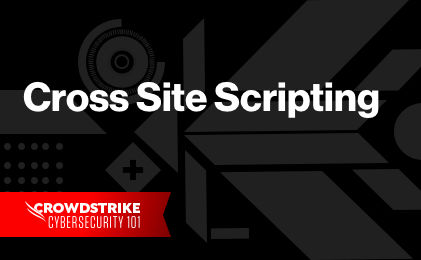Today’s organizations are facing new and significant challenges in network security. They’re adopting cloud technologies, which open new avenues of attack for cyber threat actors. Their workforce model is also growing increasingly remote, making the process of protecting endpoints and networks more complex.
In the face of these challenges, many organizations need a solution to rapidly boost their fundamental security capabilities. Among their options is the firewall as a service (FWaaS), a networking solution that deploys firewalls on demand across their environments.
Firewalls are an important piece of the networking tech stack, acting as the secure ingress and egress to filter and protect traffic. FWaaS works at the cloud level to help organizations enhance security. It simplifies policy management and provides a cost-effective way to scale networking capabilities.
In this article, we’ll look at how FWaaS protects and benefits organizations as a flexible solution that can deploy quickly to cloud environments. We’ll also discuss how to manage the challenges of using FWaaS while simplifying your networking architecture.
What is FWaaS?
Firewalls apply rules to inspect, control, and secure traffic flowing through a network. Traditionally, they’re delivered via costly on-premises appliances. Unlike traditional firewalls, FWaaS offers the same features through an on-demand service delivered via the cloud. As a cloud-based solution, FWaaS brings scalability and centralized firewall management.
The key features of FWaaS include:
Scalability
- Scales up and down with demand as the organization's needs change
- Can be offered in multiple regions to serve users globally
- Deploys in minutes
Accessibility
- APIs and the management interface provide increased control over firewalls
- Accessible remotely — regardless of location — as long as you have internet connectivity
- Configuration and policies can be applied to one service or thousands of services at once
Centralized management
- Centralized management of firewall service settings and enforcement of firewall policies and rules
- Unified enforcement across a network to deploy changes across all firewall services
Understanding the different types of firewalls
There are several types of firewalls catering to different security and business needs. When determining the best option for your organization, it’s important to be aware of the capabilities and challenges for each option.
Cloud firewalls
Cloud firewalls are deployed within their associated cloud platforms, such as AWS or Azure. They’re software-based firewalls, but they primarily operate within the cloud provider's environment. Each service caters to its own platform. This can complicate management across multiple cloud platforms, since each platform has its own features, configurations, and rules for the firewall.
On-premises firewalls
On-premises firewalls were traditionally hardware-based firewalls, but software-based firewalls have become more mainstream. They’re deployed among an organization's physical IT infrastructure, providing total control over implementation and integration. However, they can be costly to deploy across large or geographically dispersed organizations. This is in part because they require installing hardware and services in physical locations.
Compared to these other firewall options, FWaaS provides scalability without the need to invest in more hardware or learn a new firewall platform or service. This allows businesses to build their networks flexibly — no matter where they connect — without sacrificing security. FWaaS provides global-scale deployments, allowing organizations to offer security at scale.

CROWDSTRIKE FALCON FIREWALL MANAGEMENT
CrowdStrike Falcon® Firewall Management™ eliminates the complexity associated with native firewalls by making it easy to manage and enforce policies using a simple, centralized approach.
Download the Data SheetHow FWaaS works
FWaaS operates through core components that provide the service's features. The following components allow for rapid, flexible deployment while still offering all the security features organizations need:
- Cloud-based architecture: FWaaS is architected on the cloud to make the deployed firewall services available rapidly and globally. These firewall services are deployed in the closest region available to users and devices to ensure minimal latency when performing firewall functions.
- Policy management: Firewall services are accessed through a single control plane, streamlining enforcement of firewall policies. This single interface is also used for creating and managing firewall policies across all deployed firewall services.
- Threat detection and response: FWaaS detects malicious traffic attempting to enter your network or reach out to the internet. When threats are detected, teams can use the service to respond rapidly by mitigating vulnerabilities or blocking malicious actors.
How FWaaS integrates with security services
Through APIs and integrations, FWaaS allows organizations to integrate information such as content filtering details, user activity, or firewall usage metrics into other security platforms and services. Most cybersecurity platforms can help incorporate your firewall into your security threat detection and response process. FWaaS can be integrated into networking architecture — such as secure access service edge (SASE) architecture — to deliver reusable and reliable networking capabilities.
The benefits of FWaaS
FWaaS offers several benefits to modern enterprises:
Enhanced security
- FWaaS ensures that firewall policies are applied uniformly across the network through a highly available firewall service
- FWaaS provides a centralized location for organizations to conduct threat detection and management and rapidly respond to changes across their firewall services
Operational efficiency
- A single firewall service using FWaaS reduces operational complexity in IT infrastructure, replacing many platforms and services
- With only one platform to consider, organizations can make security decisions faster and rapidly apply changes to all firewall services
Cost-effectiveness
- FWaaS is more cost-effective than on-premises hardware, especially for organizations with many locations or branch offices
- Pay-as-you-go or subscription-based pricing models can be more efficient, as organizations only pay for the features and services they need
Scalability and flexibility
- FWaaS allows organizations to scale their service usage on demand
- FWaaS offers a high level of flexibility, allowing organizations to adjust to changing requirements, security vulnerabilities, or market factors
- Businesses undergoing growth or digital transformation can use FWaaS to support their network
Challenges and considerations
Although the benefits of the FWaaS are significant, it also comes with certain challenges.
Data privacy and control
Outsourcing a firewall makes it more difficult to manage data privacy , as it places data and management responsibility outside the organization. Third-party service providers could be an avenue for data leaks or unexpected downtime. Even worse, they could inadvertently introduce a vulnerability into the FWaaS.
Organizations must consider the shared responsibility between provider and customer and decide whether FWaaS fits their appetite for risk.
Latency concerns
Integrating an external firewall service can increase connection latency. Mitigation strategies include:
- Ensuring firewalls are available in your geographical region or are as close to users as possible
- Using software-defined wide area networking to route traffic through the network optimally
- Using split tunneling to route less sensitive traffic (such as web browsing or video streaming) to bypass the firewall and improve performance; however, split tunneling may introduce security risks, as it routes some traffic outside of the secure firewall
Dependence on internet connectivity
Implementing FWaaS adds a dependency on internet connectivity for its security capabilities, since you need to be online to access your firewall services. Organizations should evaluate whether their network providers can supply continuous, reliable connection for all their locations. They should also implement strategies for secure failover and have a business continuity plan in place.
Conclusion
Implementing FWaaS can be a great way to simplify management and increase security in an organization's network. Firewalls play a critical role in protecting the flow of data. With FWaaS, organizations can streamline firewall management and enforcement, enhancing security and operational efficiency across their networks.





